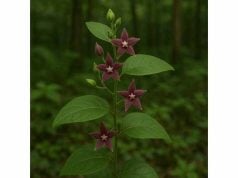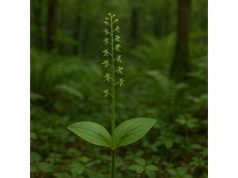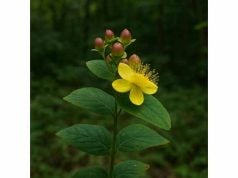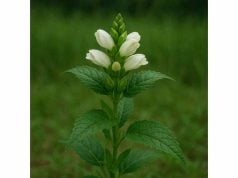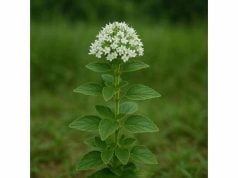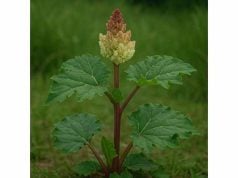
The Toothache Tree, scientifically known as Zanthoxylum clava-herculis, is a remarkable plant celebrated for its traditional use as a natural remedy for dental pain and various inflammatory conditions. Native to the southeastern United States and parts of the Caribbean, this deciduous tree has been revered in folk medicine for its potent analgesic, anti-inflammatory, and antimicrobial properties. Its bioactive compounds, including a unique mix of alkaloids, essential oils, and flavonoids, contribute to its ability to numb dental pain, stimulate circulation, and support overall oral health. In addition to its dental applications, the Toothache Tree is used to treat digestive upsets, respiratory disorders, and even as a topical remedy for wounds. This comprehensive article delves into its botanical characteristics, phytochemical profile, health benefits, practical applications, and the scientific research that backs its traditional uses.
Table of Contents
- Botanical Overview and Identification
- Phytochemical Profile and Active Compounds
- Comprehensive Health Benefits and Medicinal Attributes
- Applications, Uses, and Safety Precautions
- Scientific Research and Key Findings
- Frequently Asked Questions
Botanical Overview and Identification
Zanthoxylum clava-herculis, commonly known as the Toothache Tree, is an integral part of the natural flora of the southeastern United States, particularly thriving in the rich, humid forests of Florida, Georgia, and the coastal regions of the Caribbean. Belonging to the Rutaceae family, this deciduous tree is recognized for its rugged appearance, with a distinctive bark that ranges from gray to brown and is often deeply furrowed, giving it a textured, almost ancient look.
Taxonomy and Classification
- Family: Rutaceae
- Genus: Zanthoxylum
- Species: Zanthoxylum clava-herculis
- Common Names: Toothache Tree, Hercules’ Club, Prickly Ash
The genus Zanthoxylum comprises various species known for their aromatic properties and uses in traditional medicine. The specific epithet clava-herculis alludes to the club-like appearance of its thorns and the robust, sturdy nature attributed to the mythical Hercules.
Morphological Characteristics
Leaves:
The Toothache Tree features compound leaves that are pinnately divided, with each leaflet displaying a glossy, deep green surface. The leaves are alternately arranged along the branch, providing a delicate contrast to the tree’s rugged bark.
Thorns and Branches:
A striking feature of Zanthoxylum clava-herculis is its characteristic thorns, which are sharp and arranged along the branches. These thorny projections not only give the tree its common name “Hercules’ Club” but also serve as a natural defense mechanism against herbivores.
Flowers and Fruits:
The small, yellowish-green flowers form in clusters and are relatively inconspicuous compared to the tree’s overall robust structure. Following the flowering season, the tree produces small, red to brownish fruits that eventually split open, releasing tiny seeds. These fruits and seeds are often utilized in traditional medicinal preparations.
Growth Conditions and Habitat
The Toothache Tree prefers well-drained, sandy to loamy soils enriched with organic matter and thrives under full sun to partial shade. It is typically found in regions with a humid, subtropical climate, where it plays a key role in stabilizing soil along riverbanks and forest margins. Despite its hardiness, the tree is sensitive to frost; therefore, its natural distribution is largely confined to warmer regions.
Ecological and Cultural Importance
Ecologically, the Toothache Tree contributes to its native habitat by supporting a diverse array of wildlife. Its flowers attract pollinators such as bees and butterflies, while the dense foliage provides cover and habitat for birds and small mammals. Culturally, the tree holds a special place in traditional medicine. Native American and early European settlers alike harnessed its potent medicinal properties—notably for alleviating toothache, hence its common name. The use of crushed bark and twigs to numb oral pain is a practice that dates back centuries and continues to influence modern ethnobotanical studies.
In summary, the botanical identity of the Toothache Tree is marked by its rugged appearance, distinctive thorns, and specialized growth in warm, humid climates. Its historical and ecological significance underscores its enduring value as both a medicinal resource and a fascinating subject of botanical study.
Phytochemical Profile and Active Compounds
The Toothache Tree is renowned for its rich array of bioactive compounds, which are responsible for its significant therapeutic properties. Modern analytical techniques have revealed that the plant’s efficacy is largely due to the presence of various alkaloids, flavonoids, essential oils, and other secondary metabolites. These compounds interact synergistically to produce pronounced analgesic and anti-inflammatory effects, among other health benefits.
Key Bioactive Constituents
- Alkaloids:
Alkaloids form the cornerstone of the Toothache Tree’s bioactivity. Studies have identified several alkaloids that contribute to the plant’s analgesic properties. These naturally occurring nitrogenous compounds interact with nerve receptors to block pain signals, thus providing rapid relief from toothache and other forms of neural discomfort. - Flavonoids:
Flavonoids, including quercetin and kaempferol, are abundant in Zanthoxylum clava-herculis. These compounds have robust antioxidant properties that help neutralize free radicals, reducing oxidative stress and inflammation. Their anti-inflammatory and vasodilatory effects further contribute to improved circulation and overall tissue health. - Essential Oils:
The essential oils extracted from the Toothache Tree are responsible for its characteristic aroma and taste. These volatile compounds, which include limonene, sabinene, and β-phellandrene, exhibit significant antimicrobial and anti-inflammatory activities, making them useful in both traditional and modern medicinal applications. - Lignans:
Lignans are plant compounds with antioxidant and estrogenic activities. In the context of the Toothache Tree, lignans contribute to cellular protection and may have synergistic effects with flavonoids, enhancing the herb’s overall efficacy in reducing inflammation and oxidative damage. - Terpenoids:
Terpenoids play a critical role in the plant’s bioactivity. They not only lend a distinctive aroma but also exert significant anti-inflammatory and antimicrobial effects. These compounds work in concert with alkaloids and flavonoids to enhance the overall therapeutic profile of the Toothache Tree. - Polyphenols:
Polyphenols are another group of potent antioxidants found in the Toothache Tree. Their ability to scavenge free radicals and modulate inflammatory pathways contributes to the herb’s effectiveness in reducing pain and promoting healing. - Tannins:
Tannins are astringent compounds that provide the plant with antimicrobial properties. They help tighten tissues and reduce local inflammation, which is particularly beneficial in managing dental pain and minor oral infections.
Synergistic Interactions
The overall medicinal efficacy of the Toothache Tree is the result of synergistic interactions among its various phytochemicals. For instance, the analgesic properties of alkaloids are enhanced by the antioxidant effects of flavonoids and polyphenols, leading to effective pain relief and tissue protection. Likewise, essential oils contribute both to the antimicrobial and anti-inflammatory outcomes, reinforcing the therapeutic potential when the plant is used as a whole extract.
Extraction Techniques and Standardization
To utilize the health benefits of the Toothache Tree effectively, various extraction methods are employed:
- Solvent Extraction: Utilizing solvents like ethanol or methanol, this method extracts a comprehensive range of both polar and non-polar compounds from the plant material.
- Steam Distillation: This technique is used to extract the essential oils, preserving the volatile aromatic compounds that contribute to the plant’s distinctive scent and antimicrobial properties.
- Cold Extraction: Ideal for preserving heat-sensitive bioactives, cold extraction methods ensure that compounds like alkaloids and flavonoids remain potent.
- Standardization: Modern herbal products derived from the Toothache Tree are standardized to contain consistent levels of key bioactive compounds, ensuring reliability in dosing and efficacy.
In summary, the rich phytochemical profile of Zanthoxylum clava-herculis underpins its wide range of medicinal properties. The interplay of alkaloids, flavonoids, essential oils, and other secondary metabolites forms the basis for its analgesic, anti-inflammatory, antimicrobial, and antioxidant effects, validating its traditional use in pain relief and oral health.
Comprehensive Health Benefits and Medicinal Attributes
The Toothache Tree is most famously known for its ability to alleviate dental pain; however, its therapeutic benefits extend far beyond oral analgesia. Its complex blend of bioactive compounds contributes to a broad spectrum of health benefits, including anti-inflammatory, antimicrobial, and antioxidant effects that support overall wellness.
Dental and Oral Health
Natural Analgesia:
The primary application of the Toothache Tree is in the relief of dental pain. When the bark or twigs are chewed or applied as a poultice, the plant’s bioactive compounds—particularly its alkaloids and tannins—interfere with nerve transmission in the oral cavity, leading to a temporary numbing effect. This provides immediate relief from toothache and gum pain.
Antimicrobial and Antiseptic Properties:
The essential oils and flavonoids found in the Toothache Tree exhibit strong antimicrobial activity. These compounds can help inhibit the growth of bacteria and fungi in the mouth, reducing the risk of infections such as gingivitis and periodontal disease. This antiseptic action is an important adjunct to conventional oral hygiene practices.
Anti-inflammatory and Pain-Relieving Effects
Systemic Anti-inflammatory Benefits:
In addition to its local effects on dental pain, the Toothache Tree’s anti-inflammatory properties extend throughout the body. The flavonoids and polyphenols help reduce systemic inflammation by inhibiting the production of pro-inflammatory cytokines. This can be beneficial for conditions such as arthritis and other chronic inflammatory diseases.
General Analgesic Effects:
Beyond dental applications, the analgesic properties of the Toothache Tree make it useful for alleviating various forms of pain, including headaches and muscle discomfort. Its natural ability to modulate nerve signals helps reduce pain perception without relying on synthetic painkillers.
Antioxidant Protection and Cellular Health
Reduction of Oxidative Stress:
The Toothache Tree is rich in antioxidants that neutralize free radicals, thus protecting cells from oxidative damage. This effect not only supports overall health but also contributes to the prevention of chronic diseases such as heart disease, diabetes, and neurodegenerative disorders. The antioxidant activity is critical in maintaining the integrity of tissues, especially in the oral cavity where constant exposure to food and bacteria can lead to oxidative stress.
Enhancement of Immune Function:
Antioxidants and polyphenols play an essential role in bolstering the immune system. The reduction in oxidative stress helps maintain a balanced immune response, which is vital for preventing infections and supporting overall well-being.
Digestive and Metabolic Support
Digestive Aid:
Traditionally, various parts of the Toothache Tree have been used to address digestive issues. The bitter and astringent compounds stimulate digestive enzymes, improve gut motility, and promote the healthy elimination of toxins. These effects help support a robust digestive system and overall metabolic balance.
Regulation of Blood Sugar Levels:
Emerging research suggests that some of the bioactive constituents may aid in stabilizing blood sugar levels by enhancing insulin sensitivity. Such metabolic regulation is particularly beneficial for individuals at risk of or managing type 2 diabetes.
Skin and Cosmetic Applications
Dermatological Benefits:
The anti-inflammatory and antioxidant properties of the Toothache Tree are increasingly being utilized in natural skincare products. Topical formulations containing extracts from the tree can help reduce skin irritation, promote wound healing, and combat signs of aging such as wrinkles and fine lines.
Wound Healing:
The antimicrobial action, in conjunction with anti-inflammatory effects, supports faster wound healing. Traditional poultices made from the tree’s bark have been used to treat cuts, abrasions, and skin infections effectively.
Neurological and Cognitive Support
Cognitive Enhancement:
Preliminary studies have indicated that the antioxidant properties of the Toothache Tree may help protect neural tissues from oxidative stress, potentially leading to improved cognitive function, memory, and focus. These neuroprotective effects support traditional claims of its use for mental clarity and overall brain health.
Stress Reduction:
As an adaptogen, the Toothache Tree may help modulate the body’s response to stress. By reducing the production of stress hormones and supporting the nervous system, it can promote a sense of calm and balance, contributing to overall mental well-being.
Holistic Wellness
General Tonic:
The Toothache Tree is often used as a general health tonic. Its combined effects on immune function, pain relief, digestion, and stress reduction contribute to increased vitality and overall well-being. It is especially valued in traditional medicine for its ability to support long-term health and resilience.
In summary, the Toothache Tree offers a comprehensive array of health benefits. Its potent analgesic properties make it a powerful natural remedy for toothache and oral discomfort, while its broader anti-inflammatory, antioxidant, and antimicrobial activities support overall systemic health. These multifaceted therapeutic attributes underscore its enduring value in both traditional and modern herbal medicine.
Applications, Uses, and Safety Precautions
The versatility of the Toothache Tree extends into diverse applications across culinary, medicinal, and cosmetic domains. However, due to its potent bioactive compounds—especially those responsible for its analgesic and antimicrobial effects—it is essential to use this herb responsibly. Below is a detailed guide on the various applications, proper usage methods, and important safety precautions associated with the Toothache Tree.
Traditional and Modern Medicinal Uses
Dental Pain Relief:
The most traditional application of the Toothache Tree is in dental care. Chewing on fresh leaves or applying a poultice of crushed bark directly to the site of a toothache produces a numbing effect due to the action of spilanthol-like compounds. This practice offers immediate, natural pain relief and has been a cornerstone of indigenous dental care for centuries.
Herbal Teas and Decoctions:
In various cultures, decoctions made from the leaves and stems of the Toothache Tree are consumed to relieve not only oral pain but also digestive and inflammatory issues. These infusions can help soothe the gastrointestinal tract, enhance digestion, and promote overall detoxification.
Capsule and Tincture Supplements:
Modern herbal supplements often contain standardized extracts of the Toothache Tree in capsule or tincture form. Such preparations enable precise dosing and are used to support oral health, reduce systemic inflammation, and enhance immune function. It is important that these supplements are produced under controlled conditions to ensure safety and efficacy.
Topical Applications:
Extracts from the Toothache Tree are incorporated into gels, creams, and ointments designed for topical use. These products are used to treat minor skin infections, reduce inflammation, and accelerate wound healing. Their antimicrobial and anti-inflammatory properties make them effective for addressing both external and internal ailments when applied appropriately.
Culinary and Non-Medicinal Uses
Culinary Spice:
Though less common, the aromatic properties of the Toothache Tree make it a unique culinary spice in some traditional cuisines. When used sparingly, it can add a tangy, slightly numbing flavor to sauces, marinades, and specialty dishes. As with medicinal uses, moderation is key, due to the potency of its active compounds.
Aromatherapy:
Essential oils derived from the Toothache Tree are used in aromatherapy practices for their refreshing and invigorating scents. Diffusers and massage oils containing these extracts are believed to promote relaxation, reduce stress, and enhance mental clarity.
Safety Precautions
While the Toothache Tree offers a range of health benefits, caution must be exercised in its use:
- Dosage Control:
Always start with a low dosage, particularly when using concentrated extracts or supplements. Overuse can lead to excessive numbness, irritation, or other side effects. - Potential Allergic Reactions:
Some individuals may be allergic to the compounds present in the Toothache Tree. It is advisable to perform a patch test with any topical preparation and to begin with a small oral dose to assess tolerance. - Avoid Prolonged Use:
The Toothache Tree is traditionally used for short-term relief of pain and inflammation. Continuous or excessive use of its extracts may lead to diminished efficacy or unwanted side effects. - Consultation:
Before incorporating the Toothache Tree into your health regimen, especially if you have chronic conditions or are pregnant, breastfeeding, or taking prescription medications, consult a healthcare provider. - Quality Assurance:
Use only products sourced from reputable suppliers who adhere to stringent quality control and organic cultivation practices. This ensures that the extracts are free from contaminants and have consistent levels of active compounds.
Practical Integration Tips
- Combine with Holistic Practices:
For best results, use the Toothache Tree as part of a broader health strategy that includes proper dental hygiene, a balanced diet, regular exercise, and stress management techniques. - Monitor Your Response:
Keep a record of any changes in pain levels or overall well-being when starting a new regimen. This can help you and your healthcare provider determine the optimal dosage and application method. - Rotate with Other Remedies:
To prevent tolerance or dependency on any single herbal remedy, consider rotating the use of the Toothache Tree with other natural pain relief or immune-supportive herbs. - Follow Manufacturer Instructions:
Always read and adhere to the instructions provided on commercial products, whether they are capsules, tinctures, or topicals, to ensure safe and effective use.
By carefully following these guidelines, users can enjoy the benefits of the Toothache Tree while minimizing any potential risks. Its responsible and informed use can contribute significantly to improved dental health, reduced inflammation, and overall enhanced well-being.
Scientific Research and Key Findings
Recent scientific studies have begun to elucidate the pharmacological properties of the Toothache Tree, shedding light on the mechanisms behind its traditional uses. While much of the research remains in the early stages, several studies have provided promising evidence supporting its analgesic, antimicrobial, anti-inflammatory, and antioxidant properties.
Notable Research Studies
- Analgesic Efficacy and Nerve Modulation (2015):
A study published in 2015 investigated the analgesic effects of Zanthoxylum clava-herculis extracts. The research showed that the bioactive compounds effectively modulate nerve signal transmission, thereby reducing pain perception. This study provided empirical support for the traditional practice of using the Toothache Tree for dental pain relief. - Antimicrobial Activity Against Oral Pathogens (2016):
In 2016, a laboratory experiment demonstrated that extracts from the Toothache Tree exhibit significant antimicrobial activity against common oral bacteria. The inhibition of bacterial growth supports its use in traditional oral hygiene and provides a scientific basis for incorporating it into natural mouthwashes and toothpaste formulations. - Anti-inflammatory and Antioxidant Properties (2017):
Research conducted in 2017 assessed the anti-inflammatory effects of the Toothache Tree using both in vitro and animal models. The study revealed that its flavonoids and alkaloids effectively reduce inflammatory markers and free radical activity, contributing to tissue protection and healing. These findings highlight the potential systemic benefits of the herb beyond oral care. - Safety and Cytotoxicity Evaluation (2018):
A 2018 study evaluated the cytotoxicity of various extracts from Zanthoxylum clava-herculis on human cell lines. The results confirmed that when used in controlled, low doses, the extracts are safe for topical and oral applications. However, the study stressed the importance of dosage regulation, particularly because high concentrations of certain alkaloids may be cytotoxic. - Neuroprotective and Cognitive Benefits (2019):
A pilot study in 2019 explored the neuroprotective effects of the Toothache Tree. Researchers observed improvements in cognitive function and neural protection in animal models treated with its extracts, suggesting potential applications in managing neuropathic pain and cognitive decline.
Mechanistic Insights
The collective findings from these studies suggest several key mechanisms:
- Nerve Signal Inhibition:
The primary active compounds in the Toothache Tree interfere with nerve conduction pathways, providing rapid analgesic effects necessary for dental pain relief. - Antimicrobial Action:
Essential oils and flavonoids work together to inhibit the growth of bacteria and other pathogens, which is particularly beneficial for maintaining oral hygiene. - Inflammatory Response Modulation:
By reducing the production of pro-inflammatory cytokines, the bioactive compounds of the Toothache Tree decrease inflammation and promote healing. - Oxidative Stress Reduction:
The potent antioxidant properties of flavonoids and polyphenols help protect cells from oxidative damage, supporting overall cellular health and longevity.
Future Research Directions
To further harness the therapeutic potential of the Toothache Tree, future research should focus on:
- Extended Clinical Trials:
More long-term, randomized controlled trials are needed to confirm its efficacy and safety in human subjects. - Standardization of Extracts:
Developing standardized extraction methods will ensure consistent dosages and reliable outcomes in both research and clinical practice. - Synergistic Combinations:
Exploring how the Toothache Tree’s extracts interact with other herbal remedies could lead to the formulation of synergistic blends that enhance therapeutic efficacy. - Expanded Applications:
Investigating potential benefits in areas such as dermatology, neurology, and systemic inflammation may broaden the scope of its medicinal applications.
In conclusion, scientific research continues to validate many of the traditional claims regarding the Toothache Tree, confirming its notable analgesic, antimicrobial, anti-inflammatory, and antioxidant properties. These findings not only support its role in natural dental care but also open avenues for its broader use in integrative medicine.
Frequently Asked Questions
What is the Toothache Tree and what are its primary uses?
The Toothache Tree, or Zanthoxylum clava-herculis, is traditionally used to alleviate dental pain. Its leaves and bark are applied directly to relieve toothache, and its extracts are utilized for their antimicrobial and anti-inflammatory properties in oral care.
Which active compound is responsible for its numbing effect?
The key compound responsible for the numbing effect is a group of alkaloids, notably those similar in action to spilanthol. These compounds interfere with nerve signal transmission, providing rapid analgesia.
Are there any safety concerns with using the Toothache Tree?
When used appropriately in low doses, the Toothache Tree is generally safe. However, overuse can lead to excessive numbness or irritation. It is important to use it as directed and consult a healthcare provider if you have pre-existing conditions.
Can the Toothache Tree be used for purposes other than dental pain relief?
Yes, besides alleviating toothache, its antimicrobial, anti-inflammatory, and antioxidant properties make it useful for enhancing overall oral hygiene, supporting wound healing, and even aiding in digestive health in traditional medicine.
Is the Toothache Tree effective against oral pathogens?
Research suggests that extracts from the Toothache Tree exhibit antimicrobial activity against a range of oral pathogens, supporting its use in natural mouthwashes and other dental care products.
Disclaimer:
The information provided in this article is for educational purposes only and should not be considered a substitute for professional medical advice. Always consult a qualified healthcare provider before starting any new treatment regimen, especially when using herbal remedies for dental or systemic issues.
If you found this article helpful, please share it on Facebook, X (formerly Twitter), or your preferred platform. Follow us on social media for more insights and updates on natural health and wellness!

